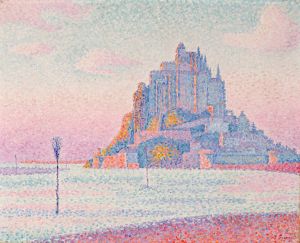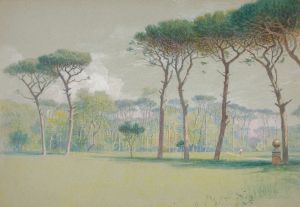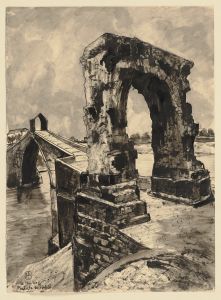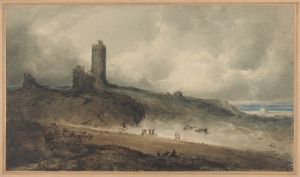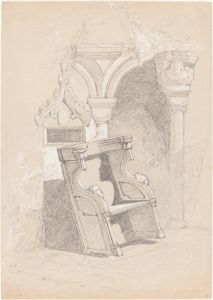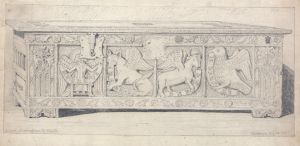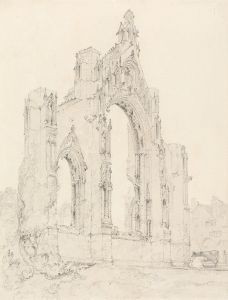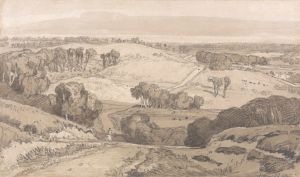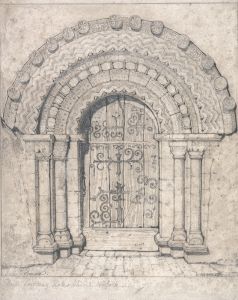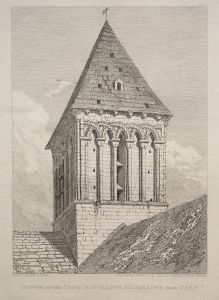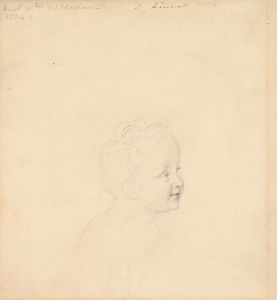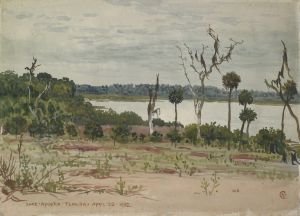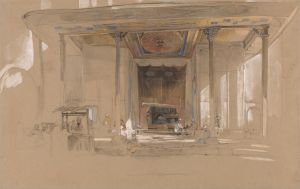
Bolton Priory, Yorkshire
A hand-painted replica of John Sell Cotman’s masterpiece Bolton Priory, Yorkshire, meticulously crafted by professional artists to capture the true essence of the original. Each piece is created with museum-quality canvas and rare mineral pigments, carefully painted by experienced artists with delicate brushstrokes and rich, layered colors to perfectly recreate the texture of the original artwork. Unlike machine-printed reproductions, this hand-painted version brings the painting to life, infused with the artist’s emotions and skill in every stroke. Whether for personal collection or home decoration, it instantly elevates the artistic atmosphere of any space.
John Sell Cotman was a prominent English painter and printmaker associated with the Norwich School of painters, a group of artists active in the early 19th century. Cotman is renowned for his landscape paintings and architectural studies, often characterized by their clarity, precision, and subtle use of color. One of his notable works is "Bolton Priory, Yorkshire," which captures the serene beauty and historical significance of the Bolton Priory ruins in North Yorkshire, England.
Bolton Priory, originally an Augustinian monastery, was founded in the 12th century and is situated in the picturesque landscape of Wharfedale, beside the River Wharfe. The priory was dissolved in 1539 during the English Reformation under the orders of King Henry VIII, leading to its partial ruin. Despite this, the priory church continued to serve as a parish church, and the site became a popular subject for artists and poets, drawn by its romantic and picturesque qualities.
Cotman's depiction of Bolton Priory is a testament to his skill in capturing architectural detail and the atmospheric qualities of the landscape. His work often reflects a deep appreciation for the historical and cultural significance of the sites he painted. In "Bolton Priory, Yorkshire," Cotman employs a delicate palette and precise lines to convey the tranquil beauty of the priory ruins set against the natural backdrop of the Yorkshire countryside.
The painting is an example of Cotman's ability to blend topographical accuracy with artistic expression. His attention to detail is evident in the careful rendering of the priory's architectural features, while his use of light and shadow imbues the scene with a sense of timelessness and serenity. Cotman's work often reflects the influence of earlier landscape artists, such as Thomas Girtin and J.M.W. Turner, yet he developed a distinctive style that emphasized simplicity and harmony.
"Bolton Priory, Yorkshire" is part of Cotman's broader body of work that includes numerous studies of English landscapes and architectural subjects. His contributions to the Norwich School and the broader Romantic movement in art have been recognized for their impact on the development of landscape painting in England. Cotman's works are held in high regard for their technical proficiency and their ability to evoke the emotional and historical resonance of the scenes depicted.
Today, John Sell Cotman's paintings, including "Bolton Priory, Yorkshire," are appreciated for their artistic merit and historical significance. They offer viewers a glimpse into the 19th-century appreciation of England's architectural heritage and natural beauty. Cotman's legacy endures through his influence on subsequent generations of artists and his role in elevating landscape painting as a significant genre in British art. His works are housed in various public and private collections, where they continue to be studied and admired for their contribution to the rich tapestry of English art history.





